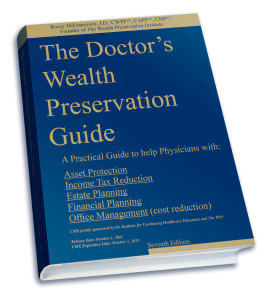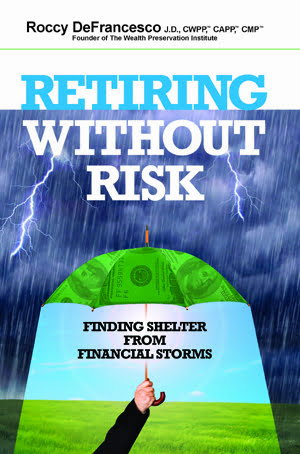More Information on Cash Value Life Insurance
- Home
- More Information on Cash Value Life Insurance
Things you Need to Know before Discussing Cash Value Life Insurance Policies
A cash value policy is a whole life, universal life, or variable life insurance policy. In short, an insured pays a planned premium; and some portion of the premium will go towards the cash value, which earns interest either at an annually declared rate or a rate that fluctuates due to stock market returns, such as those in variable life policies.
1) Cash Surrender Value (CSV)
The CSV of a policy is the amount of cash the insured would receive if he/she decided give up or terminate the life policy. The CSV in the early years of a life policy (typically years 1-10 and sometimes up to year 15) is always less than the cash account value (CAV). A good rule of thumb is that the CSV will equal the cash account value in year 10.
The CSV is lower in the early years to make sure the company stays profitable in case an insured chooses to surrender the policy. The difference between the CSV and CAV comes from the fact that the insurance company has underwriting expenses, has to pay commissions to insurance agents, and has taxes to pay.
2) Cash Account Value (CAV)
The CAV in a life policy is the amount of money the company allocates to a insured’s growth account. The cash account value is always higher than the cash surrender value in the early years of the policy. The insured does not have access to the cash account values until the “surrender” charges in the policy are gone (which is usually at the end of year 10 in most policies).
The CAV is really what grows inside a non-term life policy. If there are investment returns inside the policy, they are credited to the CAV. Then, the insurance company applies its scheduled penalty (surrender charge) to the CAV to calculate the insured’s CSV. If an insured plans to keep the policy in place for more than 10 years, typically the surrender charge is not an issue.
3) Policy Withdrawals
A withdrawal is the partial surrender of a policy. A policy owner will not have taxable income until withdrawals (including previous withdrawals and other tax-free distributions from the policy such as dividends) made from the cash reserves of a “flexible premium” (i.e., universal or adjustable life) policy exceed the policy owner’s cost (accumulated premiums). Until the policy owner has recovered his aggregate premium cost, he will generally be allowed to receive withdrawals tax free under what is known as the “cost-recovery first” rule.
4) Policy Loans
When an insured is sold a non-MEC cash building life policy, the sale, in large part, usually revolves around “loans” that can be taken from the policy “income-tax free” These loans are called wash loans.
Insureds pay NO income tax if they borrow cash value from their life insurance policy through loans. Generally, loans are treated as debts, not taxable distributions. This can give insureds virtually unlimited access to cash value on a tax-advantaged basis. Also, these loans need not be repaid until death (which is done. After a sizable amount of cash value has built up, it can be borrowed systematically to help supplement retirement income. In most cases, the insured will never pay one cent of income tax on the gain.
Many companies have created what are called “wash loans” to make the borrowing from a life insurance policy more saleable. Let’s look at the following non-wash loan situation:
If an insured has $200,000 worth of cash surrender value in the life policy, the insured could call the insurance company and request a “tax-free” loan from the policy. Let’s say that loan is $10,000. The insurance company has to charge interest in the policy on the borrowed money. If loan rates are 8%, then the policy is charged 8% interest on the loan; and that must be paid every year. The cash in the policy is still growing, but at what rate? If the crediting rate in the life policy is only 6%, then there will be a shortfall on the interest owed and the cash value will start to go backwards (and usually the insured will expect to pay back the loan at death).
If the insured had a wash loan, the interest charged on the loan would equal the growth rate on the cash in the policy; so the cash in the policy will not have to be used to pay the interest on the loan. So, if the interest on the loan is 8%, the insurance company will credit 8% on the same amount of cash in the life policy so it is a neutral transaction from the insured’s point of view. The life policy was charged 8% on the $10,000 loan, but the life policy also earned 8% on $10,000 in the policy to create this neutral situation.
Variable loans —Variable loans have been around for some time and are a very powerful option to have in a life insurance policy. To read a multi-page summary on the benefits of variable loans, please click here
5) Policy Riders
All the policies we have discussed have policy riders available. These vary from product to product and from carrier to carrier. These are the most common.
Waiver of Premium. This rider will waive all premium payments during a period of disability after a stated waiting period. This rider is very important and can make sure a supplemental retirement plan will self-complete if a disability does happen.
Guarantee Purchase Option. This rider allows the insured to purchase a stated amount of coverage at a future date without proving insurability. This could become extremely important in the event an insured becomes seriously ill.
Long-Term Care Rider. This rider is very attractive. It allows the insured to purchase coverage that will help cover the cost of a nursing home or assisted living facility in the event the insured needs long-term care. These costs can be crippling and financially devastating without some form of coverage.
Estate Preservation Rider. This rider is very useful in Estate Planning and is available from a limited number of carriers. It allows the insured to have a higher death benefit in the first four years, which can help offset the event of an estate tax look back during early policy years.
Return-of-Premium Rider. Unlike the return of premium on term life, this adds the premiums paid into the contract to death benefit values. Some contracts even guarantee this additional value.
6) Underwriting
The last issue to discuss is potentially the most critical factor in insurance, i.e., underwriting (especially when pricing the life insurance premium). All the features and design of products don’t mean much if you cannot get the underwriting offer that the insured needs to make a plan work. No insurability, no coverage. When dealing with all cases, underwriting is important; but when dealing with larger cases, it becomes critical. Healthy rate classes range from super preferred to sub-standard. There are many terms that are used in underwriting that you should know when dealing with your general agency. Let’s cover them.
- Table Ratings. In the event of a medical condition, an insured will receive a table rating or increased cost of insurance. The ratings are given as a letter or number rating and range from 1-12 or A-L. Some carriers may even go to a Table 16. The higher the number or letter, the higher the cost of insurance.
- Flat extra ratings. This rating is generally given for ratings on aviation or hobbies. For example, scuba diving may receive a permanent flat extra rating of $2.50 per thousand. There are also temporary ratings which may be assessed for certain medical conditions. These ratings can greatly increase the total cost of insurance.
- Table Shaving. Several carriers offer table shaving programs where, if the insured can be underwritten, let’s say, as a Table 4, they will be shaved to a standard rating. Some will shave from a Table 2 to standard.
- Retention Limits. When dealing with larger death-benefit cases, this is a very important factor. Essentially, it is the amount of coverage a carrier will retain in-house before entering into the reinsurance market (we will cover reinsurance shortly). This varies from carrier to carrier and can range from zero to $30 million. These limits can and do change, so check before working on a large death-benefit case.
- Auto Bind. Auto Bind is the amount a carrier can automatically cover a proposed insured for over and above their in-house retention limits without needing to go to their reinsurance partners for approval. The carrier’s reinsurance treaties will determine how much this amount is. Much like retention limits, this amount depends on the carrier being used. It can range from zero to 60 million.
- Reinsurance. Each carrier has reinsurance treaties to help offset the risk they place on their own books. Reinsurance is generally used on cases where the insured is in poor health, and the carrier is unwilling to assume the entire risk of insuring the insured. The carrier will then “shop” the case. Shopping the case means the carrier is entering the reinsurance market to shop for an offer to obtain coverage on the insured. Another reason reinsurance is used is for large death-benefit cases where the death benefit is above the carrier’s retention or auto-bind limits.
- Jumbo Limits. Jumbo limits are another feature that vary between carriers. This limit again is only used in large death- benefit cases. It takes into account not only the amount of insurance being applied for but also the amount the insured currently has in place. This amount, in large-case scenarios, determines whether the case needs to go to reinsurance to bind coverage.
- Cover Letter. The cover letter can become the most important factor in the underwriting of a case. It provides the underwriter with a synopsis of the insured who is applying for insurance coverage and will list several important factors such as: lifestyle, health conditions, prescriptions, annual income and net worth, amount of insurance being applied for, date of birth, and amount of coverage currently in force. The cover letter can be the reason that an insured does, or for that matter, does not obtain the insurance coverage applied for. If you are unsure on designing or writing a cover letter, or feel uncomfortable writing the cover letter, consult the general agency you are working with (or if you are not a licensed agent, find a quality agent who can help with the cover letter).





